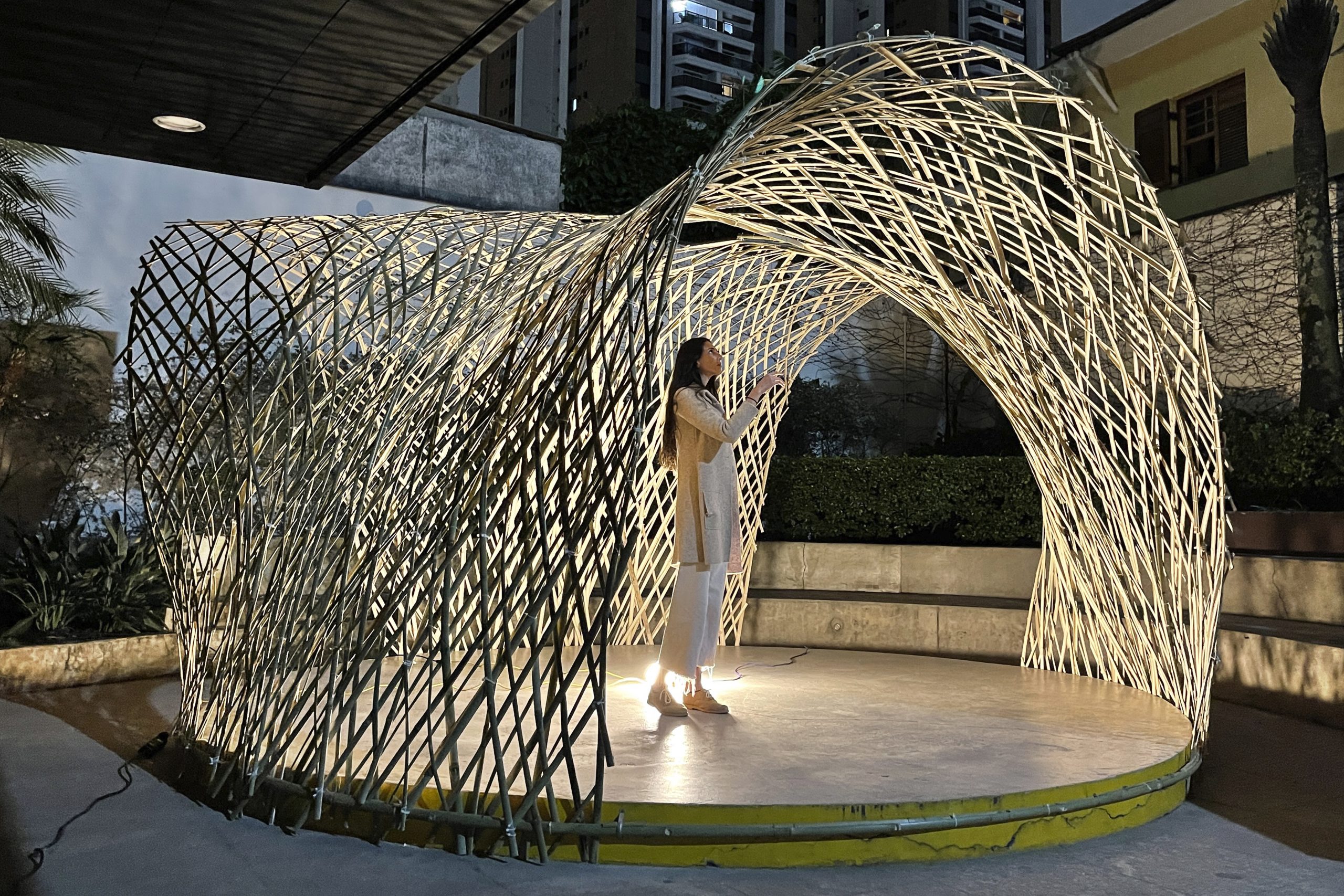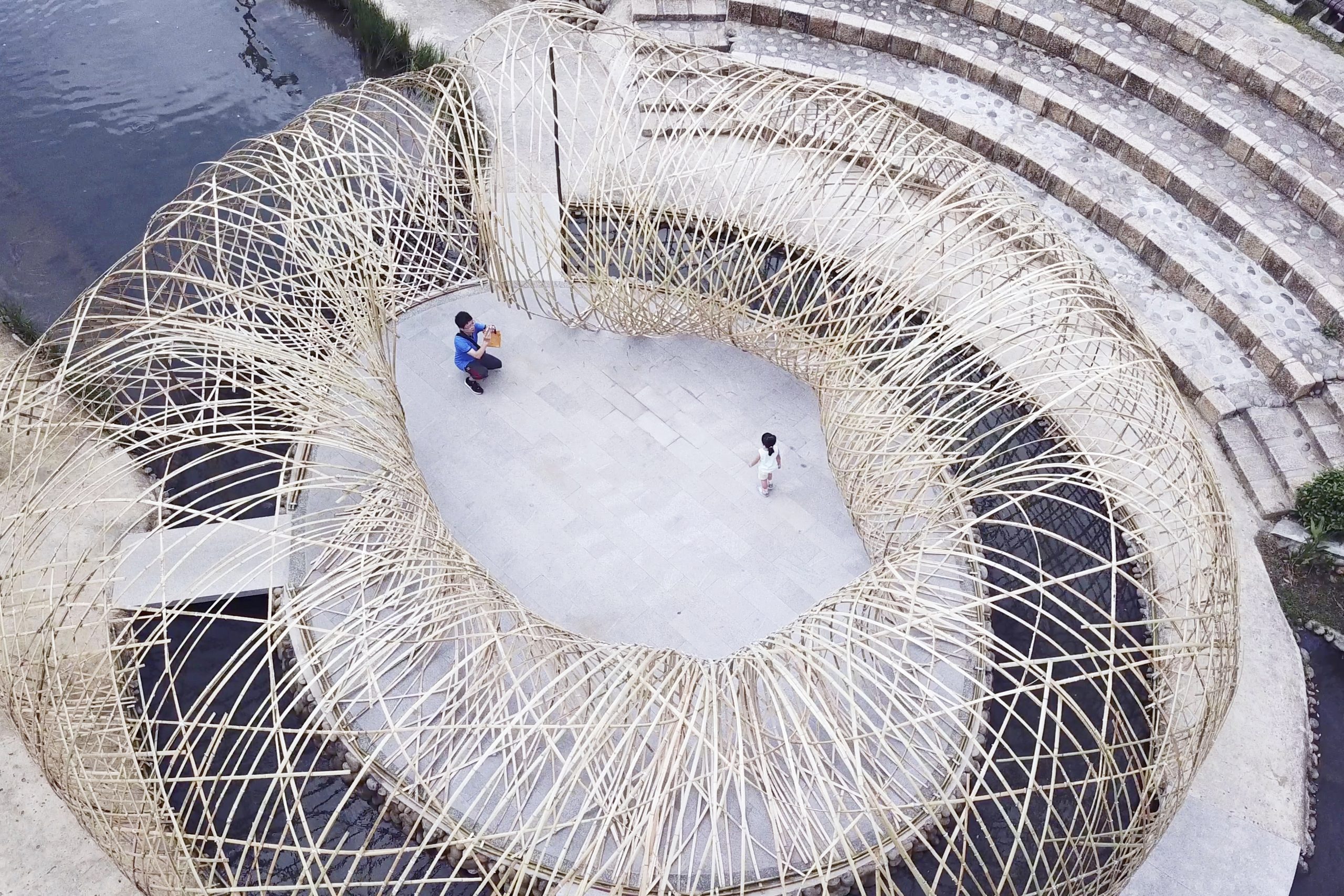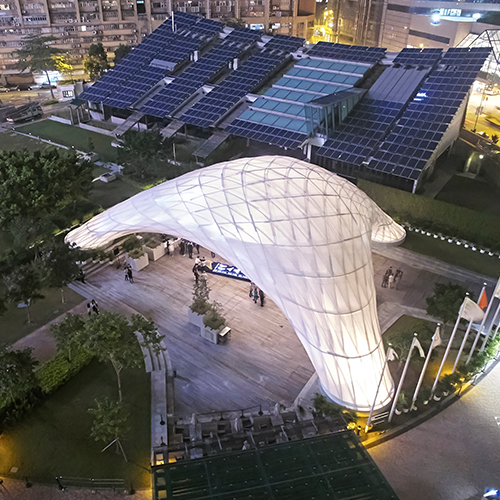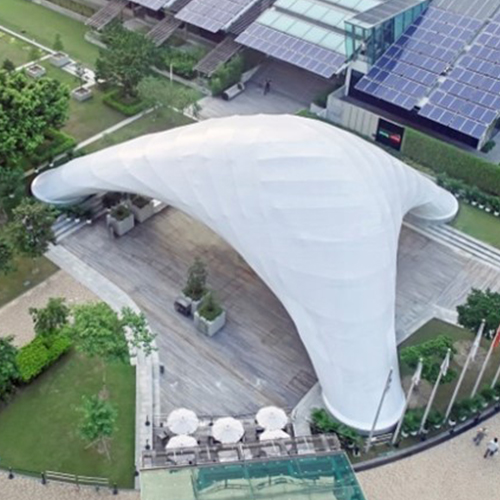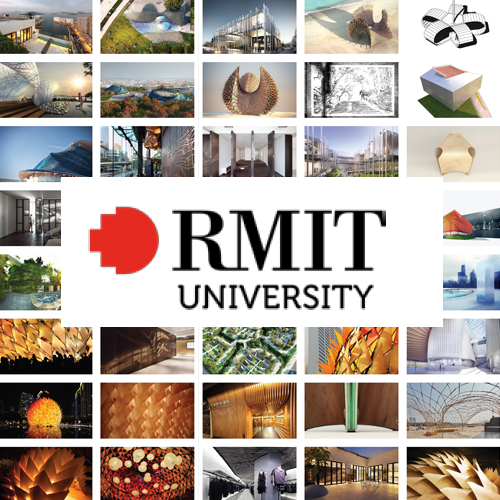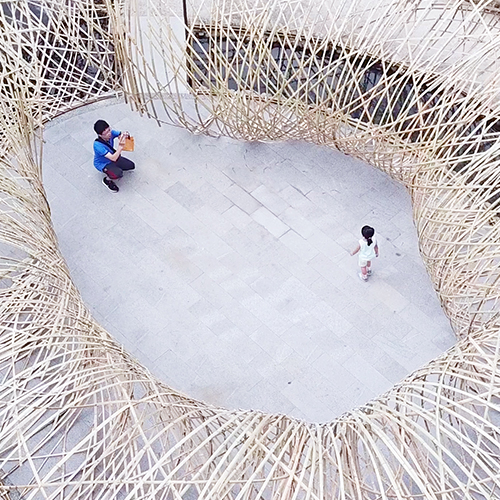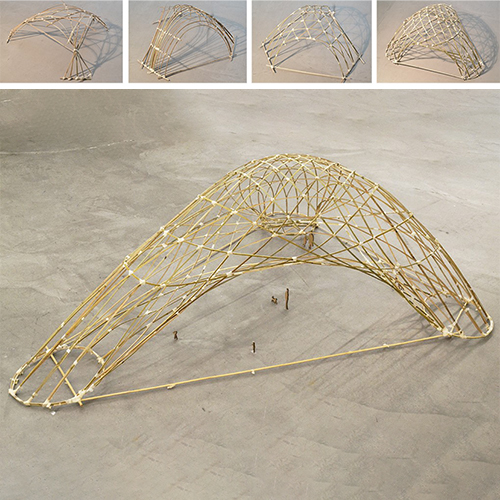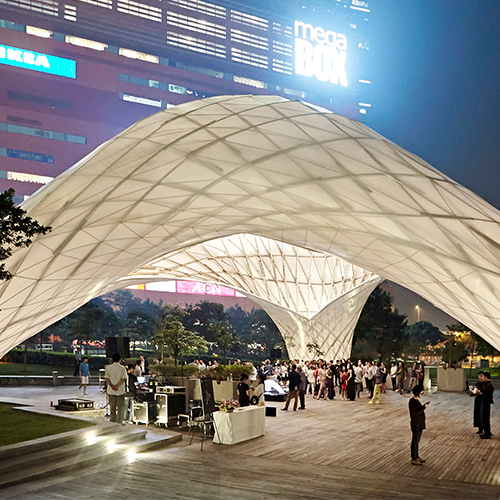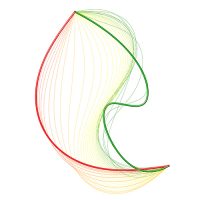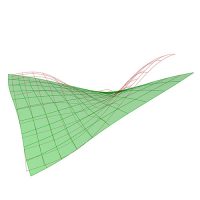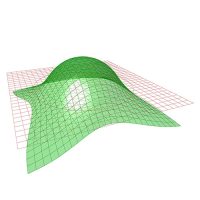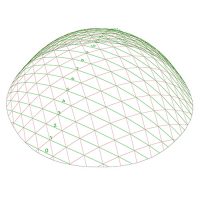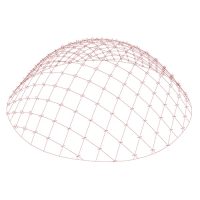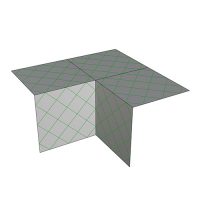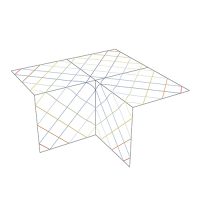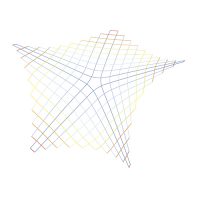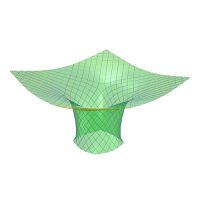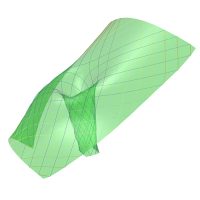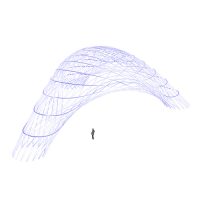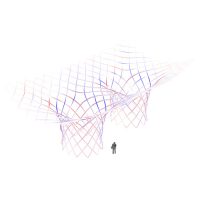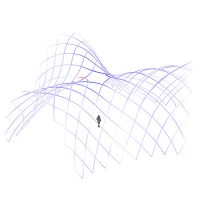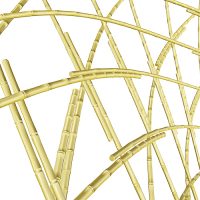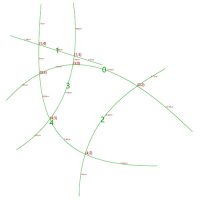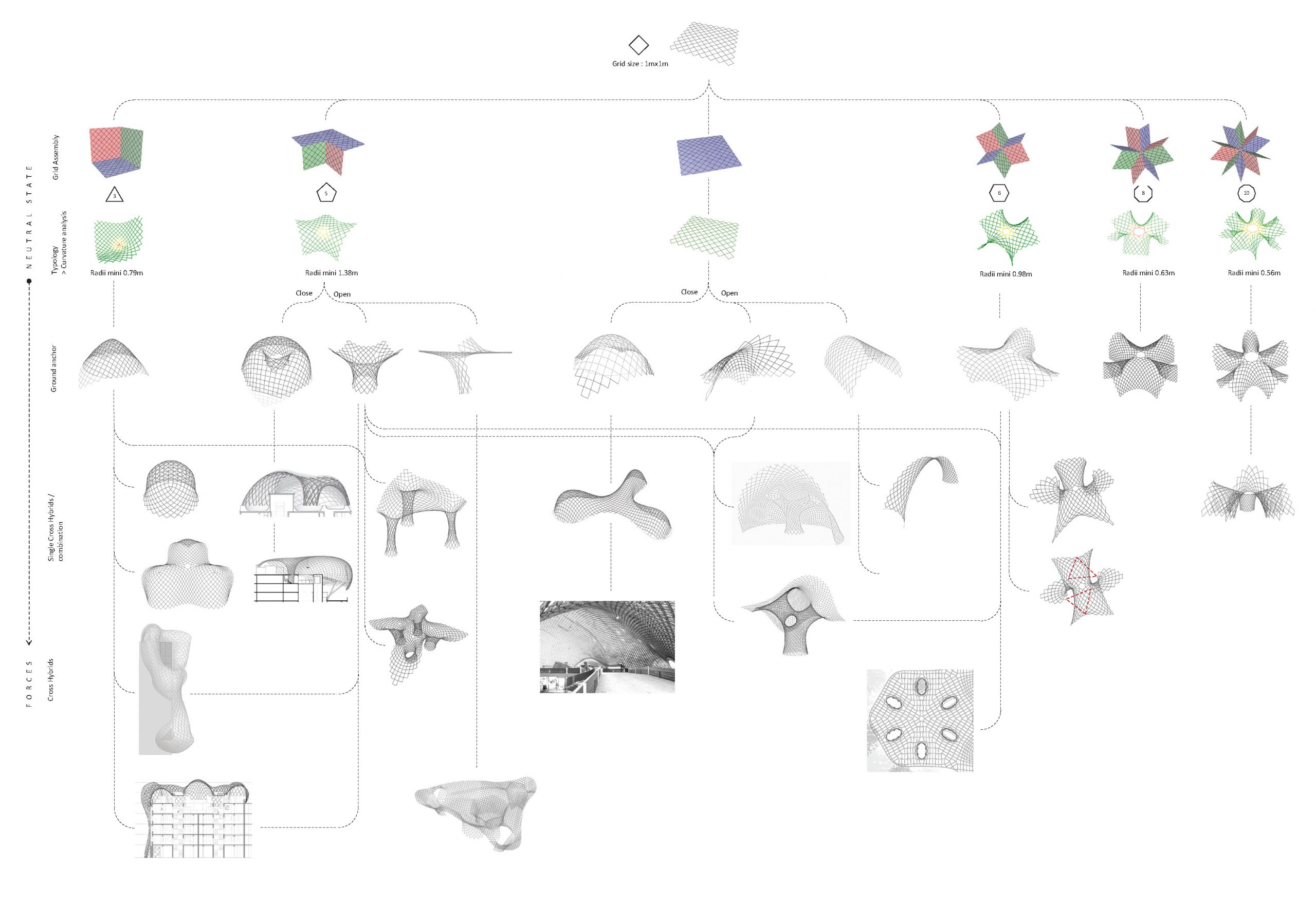1. Background
A combination of vernacular bamboo craftsmanship and digital design technology enables radically unique and spatially versatile architectural solutions rooted in local culture and sustainable building practices. This research project builds on earlier fundamental research on the digital design and implementation of Bending-Active Bamboo Shell Structures (BABSS) in order to develop a “Guidelines for Best Practice” for their computation-driven architectural design. The study combines research in architectural design with digital physics-simulation engines, low-tech, light-weight construction systems and vernacular bamboo building traditions.
Bamboo is a material of high environmental and socio-cultural importance. It is one of the fastest growing, widely available, low-cost, carbon-sequestering natural resources suitable for direct implementation in construction. It has globally been part of vernacular construction for centuries. By expanding its design solution space with contemporary answers, this project aims to positively impact the development of the built environment and the locally significant but dwindling cultural craftsmanship. Bending-active shells are amongst the most material-efficient, hyper-light-weight structures. They rely for strength and construction implementation on the overall geometrical double curvature and elastic bending properties of their components. Their nonstandard geometries provide unique spatial design opportunities, and their material efficiency results in a reduced need for natural resources. Two types of bending-active gridshell structures exist. “Flatbed” structures employ initially flat, prefabricated, regular grids with no shear rigidity, and elastically deform and brace those into place. An example of such structure is Frei Otto’s Mannheim Multihalle (Germany, 1975). Alternatively, the “lay-up” method additively bends and joins individual members into a final shape onsite, a method that was used in our ZCB Bamboo Pavilion (Hong Kong, 2015). Both types present important opportunities and restrictions. Prior research illustrates that computational tools considerably facilitate their development; yet, no scholarly study exists on hybrid structures, and limited research exists on bamboo applications.

Deployable “flatbed” structures prefabricate an initially flat regular grid with no shear rigidity and elastically deform and brace it into place.

The “lay-up” method additively bends and joins individual members into the final shape onsite. Both types present important opportunities and restrictions.
Below you can find a “Guideline for Best Practice for the design and construction of Bamboo Bending-Active Shell Structures”, focusing on digital design tools that were developed and testing through physical prototyping by an interdisciplinary support team. The studied structures present a spatially versatile and practically applicable, eco-friendly tectonic system, suitable for the low-tech, labour-driven, onsite construction contexts found in most rapidly developing parts of the world. Through this “Best Practice Guidelines” we hope to contribute to the practical expansion of their potential by increasing accessibility and applicability in real-world construction.
Research publications on several of the built prototypes that lead to this work can be found here:
Since the late 2000s, several design software programmes have incorporated real-time physics simulation engines, giving non-specialist architects design access to material behaviour simulations, expanding their applicability to early-stage architectural design. The parametric nature of these simulation engines enables the development of fully controllable building data environments that incorporate implementation communication. The combination of procedural modelling tools and digital geometry data management setups allows automated data extraction setups to be tailored for specific construction methods and building context.
All digital design and analysis tools rely on the 3D NURBS Modeller “Rhinoceros 3D”, its procedural modeller add-on “Grasshopper”, its spring-particle based physics behaviour simulator add-on “Kangaroo 2”, and its parametric structural modeller “Karamba 3D”.
Starting from the bending simulation of a single curve, the below three methods gradually build up to the bending simulation of a surface curve network.
The below exercises advance these concepts to generate shell structures using the “flatbed” method. An equidistant planar grid of orthogonal curves without shear rigidity is used as input for the simulation. An equilibrium geometry results from the set up in which a flat grid of curves is “popped up” into a doubly curved shape.
To expand on the design solution space of the typically bubble-shaped structures, non-quadrangular singularities can be introduced into the otherwise constant grid to allow alternative geometries to emerge, like columns or ridges.
3. Analysis Tools
Following real-time geometry and performance analysis tools provide designer instant feedback on crucial parameters of their design. Member curvature is the most essential property to analyse, as bending of members causes an initial strain in the material that can quickly become the primary load condition to define overall structural feasibility.
Below tools allow for a quick visualisation of overall or curve-specific curvature. The “Fingerprint Tool” further directly maps a design’s geometric curvature signature, its “fingerprint” onto a material-specific graph that, based on the chosen bamboo material’s Young’s modulus and maximum allowable material stress, shows if selected profile sections are of a too high radius.
The following tools allow for a rudimentary and preliminary structural performance analysis that can inform the conceptual design stages of a bamboo shell structure. They use structural analysis and physics simulator software “Karamba3D” to link pavilion geometry with bamboo material parameters and region-specific wind loads to predict overall structural performance and deflection.
4. Visualisation Tools
These tools allow for a quick and realistic visualisation of bamboo pavilion designs by mapping selected profile geometries onto the axis models derived from earlier exercises.
5. Fabrication Tools
This script provides a tool to generate fabrication drawings for intersecting curve networks. It outputs labels in both 3D and 2D.
6. Taxonomy
This diagram provides a taxonomy overview of the types of structures that can be developed through the incorporation of non-quad-shaped singularities into equidistant flatbed grids, thus opening up the otherwise largely-bubble-shaped geometries to a much more engaging design solution space that a.o. allows for the inclusion of columns or the creation of infinitely large structures.




